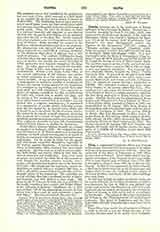

Olinda, Diocese of, in the northeast of Brazil, suffragan of San Salvador de Bahia. Erected into a vicariate Apostolic by Paul V (July 15, 1614), who annexed to it the Prefecture Apostolic of Sao Luiz do Maranhao, Olinda was created a bishopric by Innocent XI on November 22, 1676 (Constitution “Ad Sacram”). Its most distinguished prelate was Thomas of the Incarnation (1774-85), author of “Historia ecclesiae Lusitaniae” (Coimbra, 1759). From its original territory Leo XIII erected the Sees of Parahyba (1892) and Alagoas (1900). It is now coextensive with the State of Pernambuco, lying between 7° and 10° 40′ S. latitude, and 34° 35′ and 42° 10′ W. longitude, having an area of 49,575 square miles. The maritime regions are low, fertile, and well settled: the hinterland forms a plateau 500 to 700 feet high, is arid, and sparsely populated. The episcopal city was originally Olinda, founded by Duarte Coelho Pereira in 1534. It was held by the Dutch from 1630 till 1654, who established, a few miles south, a new capital, Moritzstadt, now known as Recife, or Pernambuco, an important seaport having a population of 190,000. The episcopal residence has been transferred thither, to the section called Boa Vista. Pernambuco has a university, five hospitals (one in charge of the Sisters of Mercy), a college, and many churches, the first being dedicated to Nossa Senhora da Conceicao. Outside the city are the pilgrimages of Nossa Senhora dos Prazeres and Nossa Senhora de Monte. A Benedictine abbey founded at Olinda in 1595, was reestablished on August 15, 1885, from Beuron in Hohenzollern, and is in personal union with the abbey founded at Parahyba in 1903. The present Bishop of Olinda, Msgr. Luiz Raymundo da Silva Britto (b. at Sao Bento do Peri, August 24, 1840; ordained, July 19 1864; elected, February 18, 1901), succeeded Msgr. Manuel dos Santos Pereira (b. 1827; consecrated, 1893). The diocese contains 81 parishes, 365 filial churches and chapels, 88 secular and 22 regular priests; the population is 1,178,000, all Catholics, except about 4000 Protestants.
A. A. MACERLEAN

